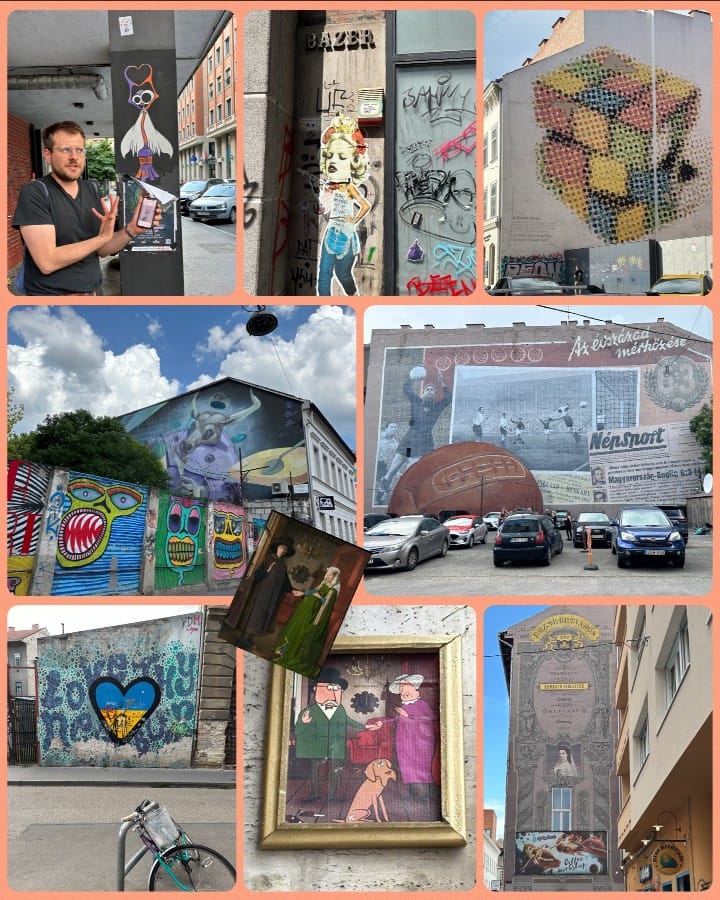Europe - Beautiful Budapest

In May 2024 I travelled to Europe for 4 weeks with a girlfriend. Over the coming weeks I thought you would like to hear about some of the fabulous places we visited.
Straddling the Danube River, Hungary’s capital Budapest, is as beautiful as I remembered when I was there in 2006 - a treasure trove of history, culture, and natural beauty, showcasing a mix of Roman, Ottoman, Gothic, Renaissance, and Art Nouveau architectural styles.
Castle Hill is located on the Buda (hilly) side – where the Royal Palace, Matthias Church and Fisherman’s Bastion rise above the Danube, while nestled behind is the Old Town - a patchwork of colourful buildings along cobblestoned laneways.

Matthias Church was named after Hungary’s most beloved king, a gothic extravaganza of turrets and towers, built in 1255, with a stunning roof of colourful tiles. During the ottoman regime, it was converted into a mosque with the interiors painted white; today it has been returned to its former glory - frescos and intricate stained-glass windows.
Fisherman’s Bastion is a cluster of white towers, arches, terraces and columns - the name derived from the guild of fishermen charged with defending this section of the castle walls. A great location to linger over coffee, with views to the Pest side, the majestic Parliament building taking pride of place along the shore, while the dome of St Stephen’s Basilica graces the skyline. Both these buildings are the tallest in Budapest and the maximum allowed at 96 meters - a reminder of Hungary’s founding year - 896.
We visited St Stephen’s Basilica - from the dome panoramic views across the Danube back to the hilly Buda side. Inside was stunning with golden mosaics and an ornate altar, including the mummified hand of King St Stephen, an object of great devotion by Hungarians!
We returned in the evening to attend a concert by the Duma String Quartet - the acoustics perfect, the interiors glimmering and even more beautiful in the soft light.

The Parliament Building is the 3rd largest in the world, (after the Parliament buildings in Bucharest and London), proudly maintained in pristine condition - every roof tile is cleaned twice a year, tattered flags immediately replaced, while a dedicated, onsite team of locksmiths and craftsmen, manufacture or repair any fitting and fixture, the moment it’s needed.
It wasn’t until 1849 when the Chain Bridge was opened that Buda and Pest were united as one city. Today several bridges span the mighty Danube River.

We stayed on the sprawling Pest side, close to the city centre and on the edge of the Jewish quarter in District 7, also known as Elisabeth Town in honour of Sissi - the Empress Elisabeth of Austria.
The area is filled with what are known as Ruin Bars, transformed from former ghettos and soviet style abandoned houses into lively, quirky bars, cafes and restaurants.To get a feel for these bars yourself, check out the 3 min video below.
Our three days in Budapest were busy ones, the museums and galleries seemed a little daunting - the Parliament with 691 rooms, the Castle Museum - 5 floors covering 2,000 years of Hungary’s history, the National Gallery - 5 wings across 3 floors showcasing large collections of gothic, medieval and renaissance art. All will need to wait for a return visit.
Our art fix was spent with Etele on a street art walking tour around the Jewish quarter - we learned a new word – nonplace -not owned or maintained by anyone and therefore street artists are free to add their art. We saw lots of street art and graffiti. I asked Etele what the difference was between graffiti and street art. His explanation:
Graffitists just want to connect with each other while street artists want to attract the broader community with political or other topical messages.
During the tour we learned that Rubik - famous for his coloured cube - was born in Budapest! Like so many countries, soccer is a national sport and close to the heart of many Hungarians. They are still boasting about their 6-3 win over England in 1953 - on his death, their star player Ferenc Puskás was bestowed the honour of being buried in St Stephen’s Basilica.

We were in Budapest to join a cruise along the Danube, and after boarding our ship we enjoyed a final day in Budapest on an included tour, which took us back to Castle Hill and Matthias Church - a joy to see it all again - even a bride posing for photos.

We drove along elegant Andrassy Avenue, likened to Paris with wide boulevards and elegant buildings, a major cultural hub with a range of museums, exhibition halls, and architectural treats.
Then Hero Square - huge with its over sized monuments, a throwback to Soviet times, before wandering around the Central Market, filled with local delicacies and souvenirs.
Hungary has an incredible abundance of underground hot water sources and Budapest is considered the thermal bath capital of the world. I indulged at one of the bath houses in 2006, but this time only managed to visit the foyer of Gellert Baths.

I loved Budapest, the locals were so friendly; good coffee at the cafes and delicious meals were easy to find at atmospheric bars or restaurants.
It’s a compact city for walking and simple to use the public transport. Budapest has so much more to offer - art galleries, museums and more quirky bars, not to mention more street art!
All too soon it was time to leave Budapest, known as the Pearl of the Danube, sailing by the icons of this beautiful city under a full moon, in the hope we will return.

We sailed through the night awaking to our next destination, another beautiful city - Bratislava, the capital of Slovakia - so keep an eye out for this post coming up in a few days.

